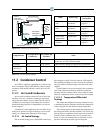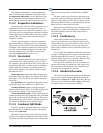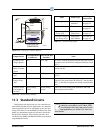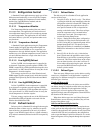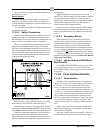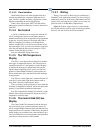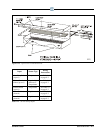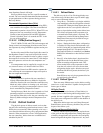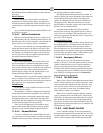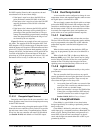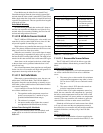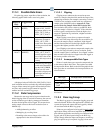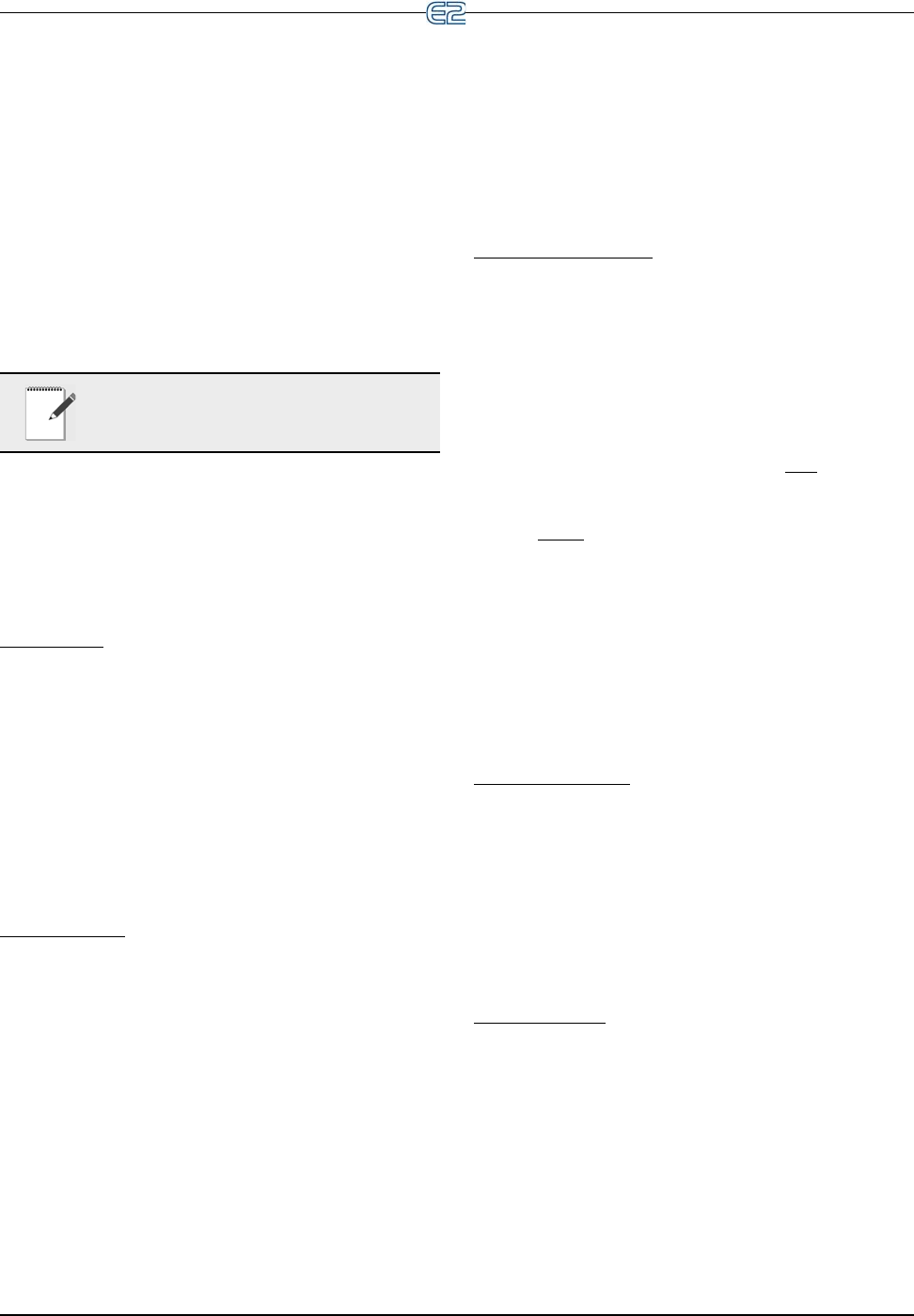
Case Control Circuits Software Overview • 11-11
ming and viewing status. (The EC-2 29x version
controls the refrigeration solenoid valve to allow
the passage of refrigerant to the TXV valve,
whereas the 39x version controls a pulse valve on
the liquid side of the evaporator to regulate super
-
heat.)
• CCBs - V
ersion 2.3 and above of the E2 software is
backward-compatible with the CCB, an I/O Net-
work-based controller used
primarily in old RMCC
installations. Like the CC-100 family, the CCB was
available in several different models that controlled
liquid pulse, liquid stepper, suction stepper, and
suction lineup.
NOTE: There are several variations of the
EC-2. Contact Emerson Retail Solutions at
1
-800-829-2724 for more information.
11.4.2.1 Valve Control
The CC-100 is capable of supporting two types of
valves: pulse and stepper. The CC-100 uses PID control to
vary the aperture rates of both valves between 0% and
100% as required by their temperature control algorithms
(see Section 11.4.3, below).
Pulse Valves
A pulse valve is a device capable of being in only two
states: fully open or fully closed. To achieve the necessary
percentage of refrigerant flow, CC-100s repeatedly
“pulse” these valves open for a percentage of an interval
called the valve period (which defaults to six seconds).
For example, to achieve a 20% valv
e output in a CC-
100 with a valve period of six seconds, a pulse valve
would be opened for 20% of six seconds (or 1.2 seconds)
and closed for the remaining 80% of the valve period (4.6
seconds). This same six-second sequence will repeat for as
long as the CC-100 calls for a 20% valve output.
Stepper Valves
Stepper valves are devices that may opened to many
different positions between fully closed (0%) and fully
open (100%). Stepper valves usually have hundreds or
thousands of “steps” in between fully closed and fully
open. To achieve the desired opening percentage, the CC-
100 moves the valve the required number of steps.
To properly control a stepper valve, the CC-100 must
know the operating characteristics of
the valve, such as its
maximum steps per second change rate, the total number
of steps between 0% and 100%, and its hysteresis rate (the
number of steps required for the valve to change direc-
tion).
11.4.3 Refrigeration Control
11.4.3.1 EEVs (Liquid Pulse and Liquid
Stepper)
In CC-100P, CC-100LS, EC2, and CCB (liquid and
pulse stepper) case controllers, there are two different con-
trol systems that work together to regulate
refrigeration:
temperature control and superheat control.
Temperature Control
Temperature Control measures the case temperature
and turns refrigeration ON or OFF as required to keep the
case within a certain proximity of the user-specified tem-
perature setpoint.
The user supplies Temperature Control with the set-
point and a deadband, which is the range of case tempera-
tures equally above and below the setpoint within which
the
case temperature will be considered acceptable. When
the case temperature is above the setpoint
plus one-half the
deadband, refrigeration will be turned ON. It will remain
ON until the temperature drops to below the temperature
setpoint
minus one-half the deadband, at which point
refrigerant flow will be turned OFF.
Case temperature may be supplied to Temperature
Con
trol by a supply air sensor, a return air sensor, or a
mixture of both the supply and return air sensor values.
Temperature Control itself does not vary the opening
percentage of
the pulse or stepper valve; it simply
addresses the case’s need for refrigerant flow to maintain
its setpoint. Once refrigeration is started, control of the
valve is handled by Superheat Control.
Superheat Control
The difference between the temperature of the refriger-
ant going in to the evaporator inlet (the coil in tempera-
ture) and the refrigerant leaving the evaporator outlet (the
coil
out temperature) is called Superheat. When refriger-
ant is flowing through an evaporator, Superheat Control
uses PID C
ontrol to keep the Superheat at a user-defined
Superheat setpoint. Superheat Control positions the valve
to increase or decrease refrigerant flow in an effort to keep
the Superheat equal to a user-defined Superheat setpoint.
Recovery Mode
Recovery Mode is a special part of Superheat Control
that occurs at the beginning of every refrigeration cycle.
When refrigeration has been OFF and Temperature Con-
trol calls for refrigeration to be ON, a Recovery Mode
beg
ins, during which the valve is fixed to a user-defined
percentage (usually 70%) for a fixed amount of time. This
floods the previously empty evaporator with refrigerant
and gradually establishes a differential between the coil in
and coil out temperatures. When the Recovery Mode ends,
the superheat will be relatively close to the setpoint; at this



